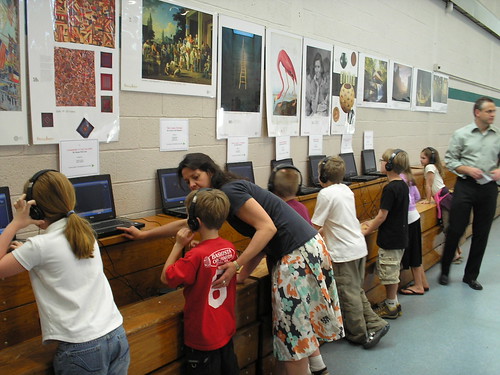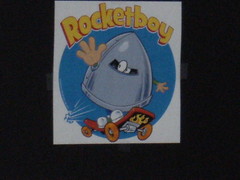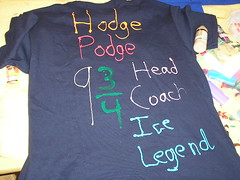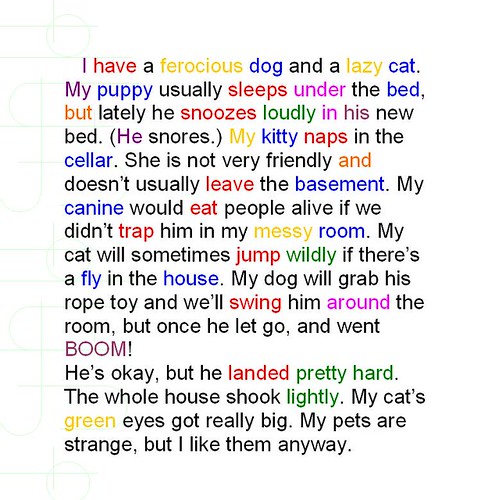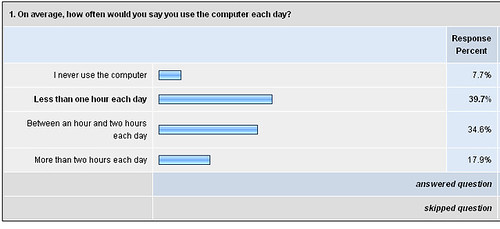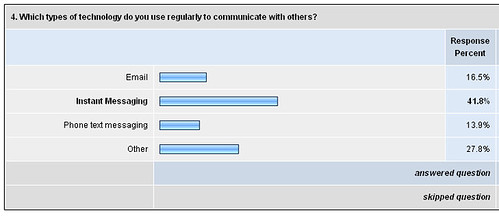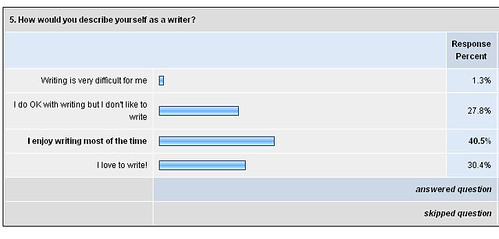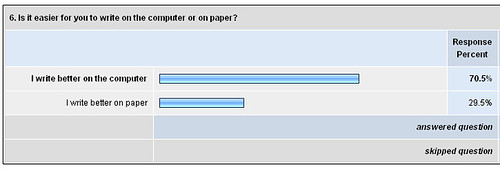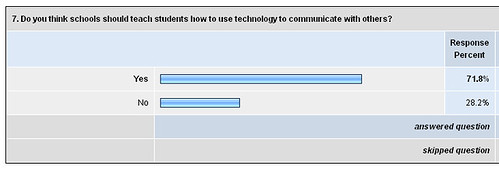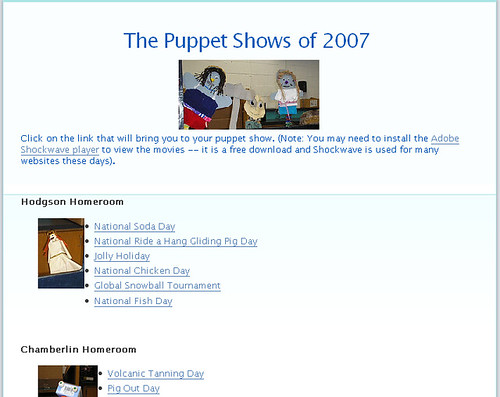I teach writing to 11 year olds but that doesn’t stop me from injecting some political current events into our activities. I remind them that they need to pay attention to the world, as it is their world that is being developed right now. The political season in the US provides us teachers with an opportunity to talk about leadership and the ways of our government and I sure hope that teachers are using this opportunity.
Yesterday, our state held its primary election (Hillary Clinton won). Last week, I had a long discussion with all of my students about the differences of a primary and a caucus, and what those results mean.
I decided that I wanted to give my students some voice and so we held a modified “Mock Election” using Survey Monkey to allow my 80 students to cast a vote for major candidates in both parties and to answer some questions about the state of our country and the priorities facing our nation.
First of all, the voting:
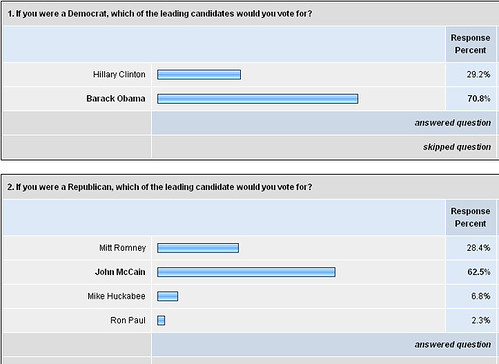
They are really struck by the youthfulness of Barack Obama and that appeals to them. It also is a surprise to them that we have never had a woman run for president. Or maybe it is shock. The girls, in particular, seem to connect with the concept of Clinton and it makes me wonder, regardless of her politics and chances of winning, if she isn’t making a substantial impact on young women right now just by being in the race and having a powerful voice.
McCain has appeal because of his time in the military and they know that he was a POW and they believe that gives him some fortitude in leadership.
I then asked them to consider which issues are most important to them:
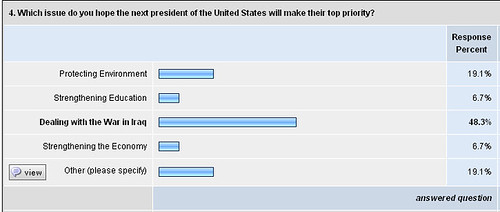
I thought for sure that the environment was going to win but the war continues to be a focus. We live near an Air Force Base and there are a number of families with relatives in Iraq, so the war and its impact is very close to home for many of my students.
Then, I wondered if they thought they should have the right to vote.
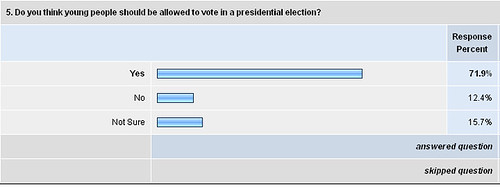
I guess the graph says it all.
Peace (in politics),
Kevin
